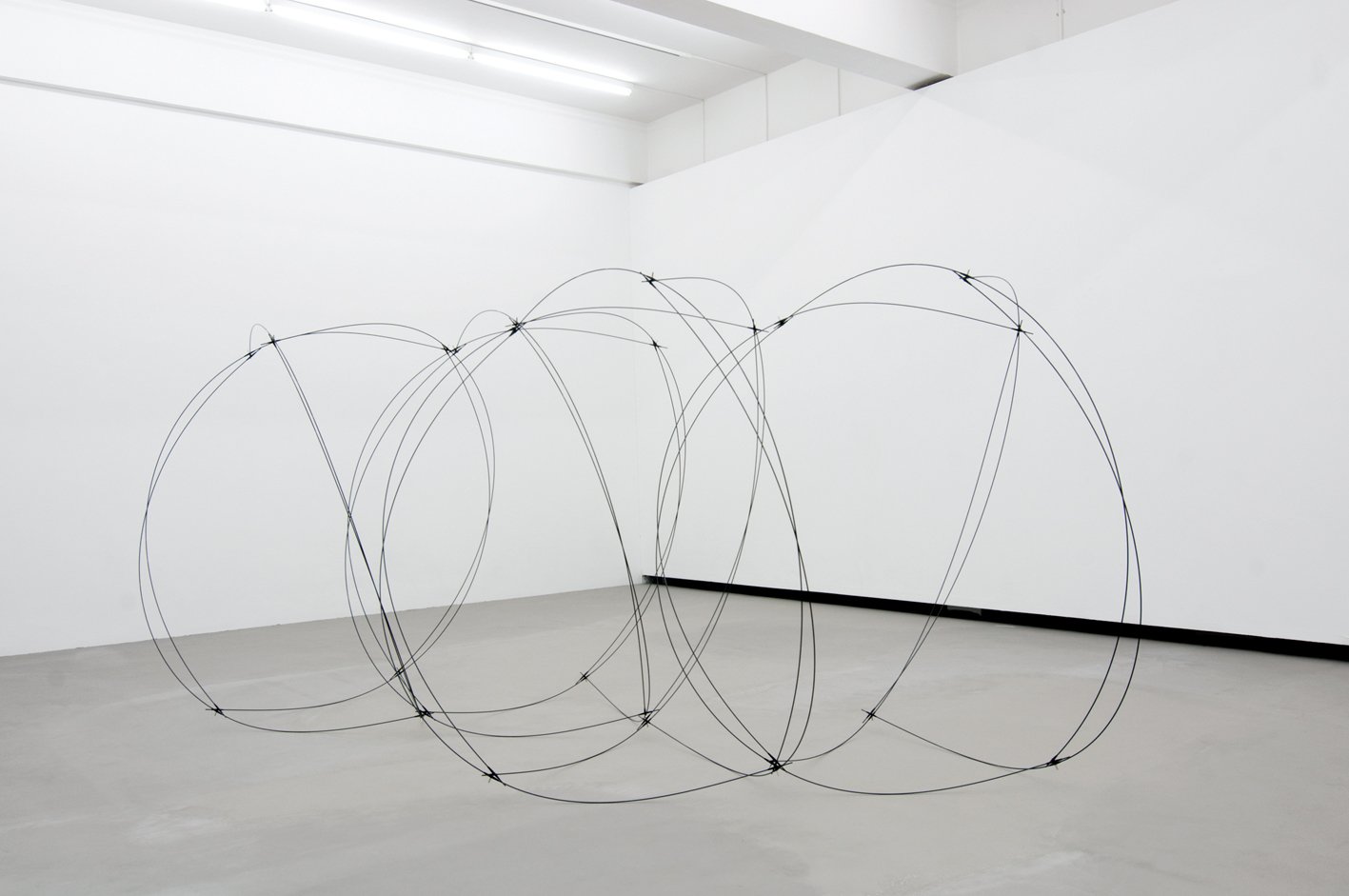
SCHLEICHER/LANGE BERLIN
LARS ENGLUND
19 January, 2013 - 23 February, 2013






-
SCHLEICHER/LANGE is pleased to present this solo show by Lars Englund, for which the artist has conceived a new installation, Theorem B (2013) that he presents in dialogue with one of his very first sculptural works, Volym (1964).
Swedish artist Lars Englund can look back over a fifty-year career. Originally coming from the world of painting, he transferred his ideas to the three-dimensional realm, and yet line remains a decisive element in his work. It defines a corpus by making visible the limits that mark its separation from its surroundings, thus placing emptiness and space in a tense relationship to one another. In so doing, he repeatedly seems to question in a frame visually perceptible to the beholder what and how much (material, for example) is necessary to make the limits of space visible. Here, Englund not only raises questions about an aesthetic engagement with the subject of space and the void and a dialogue with the surroundings, but also opens the field for questions on the importance of space and limits in the territorial context. An additional facet is the philosophical dimension of “empty space” in the sense of leeway or room to develop in every sense. His work thus reveals a sensitive topicality and offers delicate room for interpretation, without having to stand at the foreground, for his reduced vocabulary of forms is striking in its clarity and unobtrusiveness and operates independently.
The new sculptural work Theorem B (2013), filigreed carbon fiber beams based on Englund’s Borderline series, illustrate this clearly. Although his works touch on aspects of artistic concepts of abstraction, constructivism, and minimalism, he has also developed an artistic signature all his own. Lars Englund’s sculptures are based on a fundamental element that is multiplied and used in various ways, like a construction set. Using this system of individual modules, the artist creates a new spatial cosmos. The result, the sculpture, is a visually concrete, aesthetic description of a theoretically plausible and planned regularity, similar to a mathematical formula. In this way, Englund creates an optical rhythm, a variety that stands in an interesting tension to the simplicity of the material or the principle of the sculpture’s emergence. Since the corpuses of these sculptures often reveal no clear beginning or ending, they appear to embody a concept of infinity.